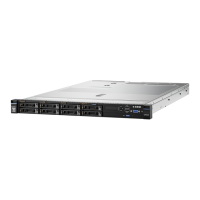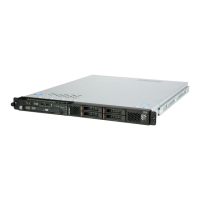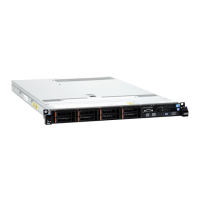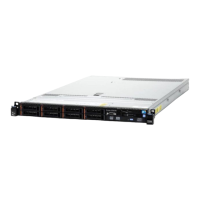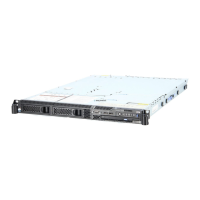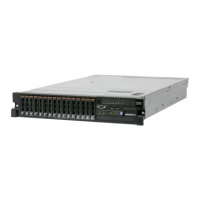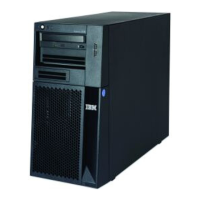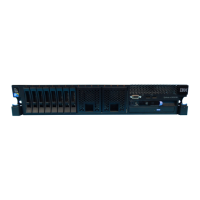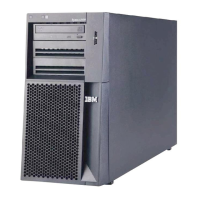the power supply is supplying adequate dc power to the system. During typical
operation, both the IN OK and OUT OK power LEDs are lit. For any other
combination of LEDs, see “Power-supply LEDs” on page 110.
v Power-supply error LED: When the power-supply error LED is lit, it indicates
that the power supply has failed.
Note: Power supply 1 is the default/primary power supply. If power supply 1
fails, you must replace the power supply immediately.
v System-error LED: When this LED is lit, it indicates that a system error has
occurred. An LED on the light path diagnostics panel is also lit to help isolate the
error.
v Power-on LED: When this LED is lit and not flashing, it indicates that the server
is turned on. The states of the power-on LED are as follows:
Off: Power is not present, or the power supply or the LED itself has failed.
Flashing rapidly (4 times per second): The server is turned off and is not
ready to be turned on. The power-control button is disabled. This will last
approximately 20 to 40 seconds.
Flashing slowly (once per second): The server is turned off and is ready to
be turned on. You can press the power-control button to turn on the server.
Lit: The server is turned on.
Fading on and off: The server is in a reduced-power state. To wake the
server, press the power-control button or use the IMM Web interface. See
“Logging on to the Web interface” on page 268 for information on logging on
to the IMM Web interface.
v System-locator LED: Use this LED to visually locate the server among other
servers. You can use IBM Systems Director to light this LED remotely.
Server power features
When the server is connected to a power source but is not turned on, the operating
system does not run, and all core logic except for the service processor (the
integrated management module) is shut down; however, the server can respond to
requests from the service processor, such as a remote request to turn on the
server. The power-on LED flashes to indicate that the server is connected to a
power source but is not turned on.
Turning on the server
Approximately 5 seconds after the server is connected to power, one or more fans
might start running to provide cooling while the server is connected to power and
the power-on button LED will blink quickly. Approximately 20 to 40 seconds after the
server is connected to power, the power-control button becomes active (the
power-on LED will blink slowly), and one or more fans might start running to provide
cooling while the server is connected to power. You can turn on the server by
pressing the power-control button.
The server can also be turned on in any of the following ways:
v If a power failure occurs while the server is turned on, the server will restart
automatically when power is restored.
v If your operating system supports the Wake on LAN feature, the Wake on LAN
feature can turn on the server.
Note: When 4 GB or more of memory (physical or logical) is installed, some
memory is reserved for various system resources and is unavailable to the
14 IBM System x3550 M3 Types 4254 and 7944: Problem Determination and Service Guide
